International Demonstration Teaching Team
for the Course of Principles of Heat Treatment and Surface Treatment
一、课程简介
Introduction
Principles of Heat Treatment and Surface Treatment(热处理和表面处理原理)是西里西亚智能科学与工程学院机械设计制造及其自动化专业必修课,32学时,2学分,英文授课。课程以金属材料基础理论、热处理和表面处理原理为核心内容,通过培养学生专业素养和创新思维,支撑专业培养目标。
Principles of Heat Treatment and Surface Treatment is a compulsory course set for the major of mechanical design, manufacturing and automation in the Silesian College of Intelligent Science and Engineering. The course has 32 class hours, 2 credits, and is taught in English. The course takes the basic theory of metal materials, heat treatment and surface treatment principles as the core content, and supports the major training objectives by cultivating students' professional quality and innovative thinking ability.
二、授课教师
Team Members
Jan Jezierski,波兰籍,专业必修课Principles of Heat Treatment and Surface Treatment(热处理和表面处理原理)外方教师。波兰西里西亚技术大学机械工程学院铸造工程系教授,教学领域及科研方向:金属材料冶金,铸造工程自动化、机器人工程。
Dr. Jan Jezierski, Polish nationality, is the foreign teacher of Principles of Heat Treatment and Surface Treatment, who works in the Department of Foundry Engineering, School of Mechanical Engineering, Silesian University of Technology. His teaching and research directions include Metallurgy, Foundry Engineering Automation and Robot Engineering.

钱晓明,专业必修课Principles of Heat Treatment and Surface Treatment(热处理和表面处理原理)中方教师,燕山大学机械工程学院冶金机械系教师。教学研究方向:新工科人才培养模式改革、大学生思想政治教育研究、高校创新创业教育教学研究;科学研究方向:金属材料短流程绿色化制备理论技术。
Dr. Qian Xiaoming, is the Chinese teacher of Principles of Heat Treatment and Surface Treatment, from the Department of Metallurgical Machinery, School of Mechanical Engineering, Yanshan University. His teaching research area includes new engineering talent training mode, the research of college students' ideological and political education, and the research of innovation and entrepreneurship education in universities, and his research direction focuses on theoretical technology of short-process of metal materials.
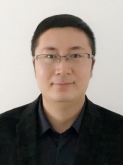
三、课程建设
Course Construction
中波双方教师依托中外联合课程规范化建设项目,围绕课程建设策划与规划、教学目标定位与教学内容优化、教学安排与教学方法系统完善、项目教学体量调整及质量提升、学生跨文化交流能力水平培养及教学文件完善优化等方面工作开展课程建设。
Relying on the Sino-foreign joint curriculum standardization construction project, the teachers from China and Poland have carried out course construction with curriculum planning, positioning of teaching objectives and optimization of teaching content, improvement of teaching arrangement and teaching method system, qualitative and quantitative improvement of project teaching, cultivation of students’ cross-cultural communication ability, and optimization of teaching documents.
首先,开展课程建设策划与规划。明确校级、院级课程实施要求,确认各管理阶段教学文件政策文件,制定课程建设总体规划,明确课程建设的目标、原则和重点,确定课程规范化建设详细流程,收发沟通邮件计66次(图1)。
Firstly, the team carried out curriculum construction planning, clarified the curriculum implementation requirements at university and college level, the policies and teaching documents of different teaching and management sections. They also formulated the overall plan of curriculum construction, by determining the objectives, principles and priorities, and detailed process of curriculum standardization construction through a total of 66 times of email communication. (Fig.1).
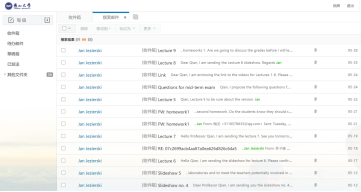
Fig.1 Email communications
其次,进行教学目标定位与教学内容优化。以燕山大学西里西亚智能科学与工程学院办学理念为基本依据,围绕学院人才培养方案要求,结合学生群体特征,进一步明确本课程教学目标定位。以外方教学文件为基础,收集检索国际最新的热处理和表面处理理论和技术,包括新的热处理工艺、材料表面的新材料和新处理方法等,融入教学内容体系,同时,将国际最新前沿热处理和表面处理理论和技术进展与国内实际应用需求相结合,提升增强课程的实用性(图2)。
Secondly, the teaching goal orientation and content optimization have been implemented. Based on the training concepts of Silesian College of Intelligent Science and Engineering at Yanshan University, the team has further clarified its teaching orientation according to the requirements of the training program and students’ characteristics. The course is based on foreign teaching documents, with the latest international theories and technologies of heat treatment and surface treatment (including new heat treatment processes, new materials and new treatment methods on the surface of materials, etc.). At the same time, the latest international frontier theories and technologies of heat treatment and surface treatment were combined with domestic practical application to enhance the practical training of this course. (Fig.2).

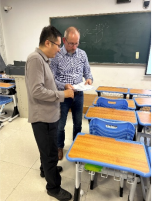
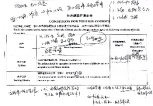
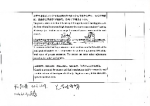
Fig.2 Discuss on the teaching documents
第三,开展教学安排与教学方法系统完善工作。在遵循教务处相关规章制度的条件下,完善理论及实践教学安排。在制定教学计划时,合理安排教学时间和教学进度,注重理论与实践教学结合,合理分配教学时间和资源。根据中方教学特点,系统完善课程及实践教学方法,教学过程采用多种教学方法和手段,如多媒体教学、网络教学、小组讨论等,综合多种教学方法,培养学生的自主学习能力和合作学习能力(图3)。
Thirdly, the team has improved the teaching arrangement and teaching method system and optimized both theoretical and practical teaching arrangement in accordance with relevant rules and regulations of the Department of Academic Affairs, Yanshan University. The teaching schedule and process have been reasonably arranged, with theoretical teaching combined with practice. The teaching time and resources were also allocated reasonably. The course and practice teaching methods were systematically improved according to Chinese teaching characteristics. A multiple of teaching methods, such as multimedia teaching, online teaching, group discussion, and others have been adopted in the teaching process to cultivate the independent and cooperative learning abilities of students. (Fig.3).
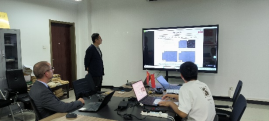

Fig.3 Teaching content and resources design cooperation
第四,项目教学体量调整及质量提升。以课程内容为核心,合理调整项目教学体量。合理安排项目教学内容和时间,根据课程内容实际情况适当增加项目教学环节的比重。调整方案注重项目教学内容的实用性和可操作性。在项目教学过程注重前沿专业内容项目教学的质量和效果,采取灵活多样的项目教学方式提高教学质量,加强项目教学的管理和监督、优化项目教学评价体系(图4)。
Fourthly, the Project-based Teaching has made progress with high quality. Teachers properly adjusted project teaching proportion, arranged content and time schedule, and reasonably increased the proportion of project teaching on the basis of the actual situation. The adjustment scheme focused on the practicability and operatability of the project teaching content. In the process of project teaching, the team paid attention to the quality and effect of the frontier professional content, taking flexible and diverse project teaching methods to improve the quality of teaching, strengthening the management and supervision of project teaching, and optimizing the project teaching evaluation system. (Fig.4).
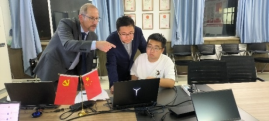

Fig.4 Project teaching module discussion
第五,学生跨文化交流能力水平培养。课程适当增加跨文化交流方面的教学内容,设计教学内容涉及不同文化背景下的语言表达方式、礼仪习俗等。开展跨文化交流活动,包括国际文化交流主题讨论、文化座谈等,全面提高学生的跨文化交流意识和能力。培养学生的跨文化交流能力过程注重提升学生的语言水平和文化素养,设置课程外语专题提升模块、语言实践环节,提高学生语言应用能力和文化素养水平。课程内容融入国际化元素,包括国际标准、行业动态等,拓宽学生的国际视野和知识面(图5)。
Fifthly, the team attached the great importance to the cultivation of cross-cultural communication of students. The course appropriately added the teaching content of cross-cultural communication, including language expression, etiquette and customs of different cultures. International cultural discussions, cultural seminars and other cross-cultural activities were carried out, aiming to promote cross-cultural communication awareness and ability of students in all respects. In this process, the team put efforts to improving students' language level and cultural literacy, offering English improvement and practice modules in the course. International standard, industry trends and other elements were also introduced in the class to broaden students’ global vision and knowledge. (Fig.5).
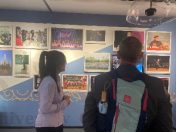
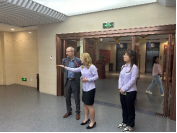
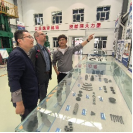
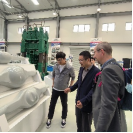
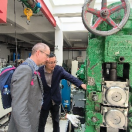
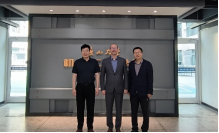
Fig.5 Cross-cultural visiting and exchanging
第六,完善优化教学文件。根据学校课程规范化建设标准和流程,对教学文件进行汇总整合,编写适用于学校课程规范化建设通用标准的教学文件,包括教学大纲、教学计划、考核方案等(图6)。
Sixthly, the team have also optimized relevant teaching documents. According to the criteria of YSU’s standard curriculum construction, the teachers summarized and compiled teaching documents in line with the general criteria of standard curriculum construction, including the syllabus, teaching plan, assessment plan, etc. (Fig.6)
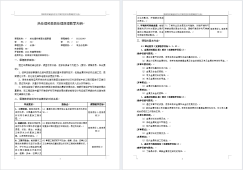
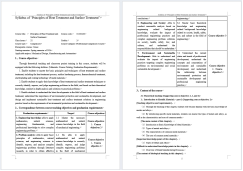
Fig. 6 Syllabus of the course Principles of Heat Treatment and Surface Treatment in English and Chinese
四、课程内容
Course Content
Principles of Heat Treatment and Surface Treatment(热处理和表面处理原理)课程是一门理论性较强的专业必选课,课程内容包括、晶体学与微观结构与金属的力学性能、热处理基础、退火和正火、钢的淬火和回火、表面硬化工艺、热化学处理、表面处理、电镀和涂层技术、腐蚀与防腐、耐磨性、有色金属热处理、材料处理的新兴技术(图7-9)。
The Principles of Heat Treatment and Surface Treatment is a theoretical compulsory course, which includes crystallography, microstructure and mechanical properties of metals, heat treatment basis, annealing and normalizing, quenching and tempering of steel, surface hardening process, thermochemical treatment, surface treatment, electroplating and coating technology, corrosion and anti-corrosion, wear resistance, non-ferrous metal heat treatment, and emerging technologies of material treatment. (Fig.7-9).
课程以金属材料热处理和表面处理原理为主线,课程内容具有逻辑性和实用性强的特点,课程实例多、素材多、讨论环节多,教学设计过程着重考虑完成教学任务的同时,培养学生的逻辑思维和创新意识。
The course takes the principle of heat treatment and surface treatment of metal materials as the main line, and the content has the characteristics of logicality and practicality. Examples, discussions and video links feature in the course. The teaching design focuses on cultivating students’ logical and innovative thinking while completing the teaching tasks.
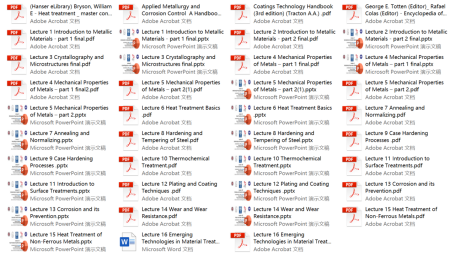
Fig.7 Course files and reference books

Fig.8 Course video shows
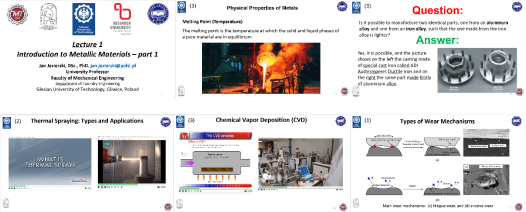
Fig.9 Course slides
五、课程效果
Course Effect
《Principles of Heat Treatment and Surface Treatment(热处理和表面处理原理)》中外联合课程经过本轮建设,充分借鉴了外方先进的教学理念和方法,同时对课程进行了深度本土化和规范化、形成了较为完整的教学文件体系,学生反馈课堂教学效果良好,学生随堂评价分数为99.76分(图10)。
The course has fully used foreign advanced teaching concepts and methods, and deeply promoted localization and standardization with a comparatively complete teaching document system being established. Students’ feedbacks on teaching are quite good, and teacher evaluation score reaches as high as 99.76/100. (Fig.10).
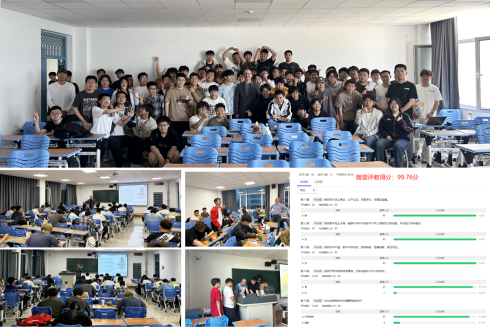
Fig.10 Teaching scene and evaluation score
六、课程展望
Course Prospect
中外联合办学已成为新形势下高等教育国际化的重要形式之一,中方通过引进国外优质教育资源,提高高等教育的质量和水平,是推动高校的国际化发展的重要途径。《Principles of Heat Treatment and Surface Treatment(热处理和表面处理原理)》中外联合课程规范化建设是西里西亚智能科学与工程学院发挥自身办学优势的有效尝试。学院依托中外联合课程规范化建设,整合中外优质教育教学资源,优化专业课程体系,有效提升了教育教学质量和人才培养水平,为学院开展高质量教育教学改革、培养高素质专业人才提供了坚实的理论和实践支撑。
Sino-foreign joint education has become one of the significant forms of global education. Introducing high-quality foreign educational resources is an important means to enhance the quality and level of higher education and promoting global development of universities. The Sino-foreign joint construction of Principles of Heat Treatment and Surface Treatment is considered an effective attempt by the SCISE to exert its own advantages in school running. The SCISE, relying on the standard construction of Sino-foreign joint courses, integrates both Chinese and foreign high-quality education resources, optimizes curriculum system, effectively improves the quality of education and the level of talent training, providing a solid theoretical and practical support for high-quality education reform and high-caliber talent cultivation in the future.

